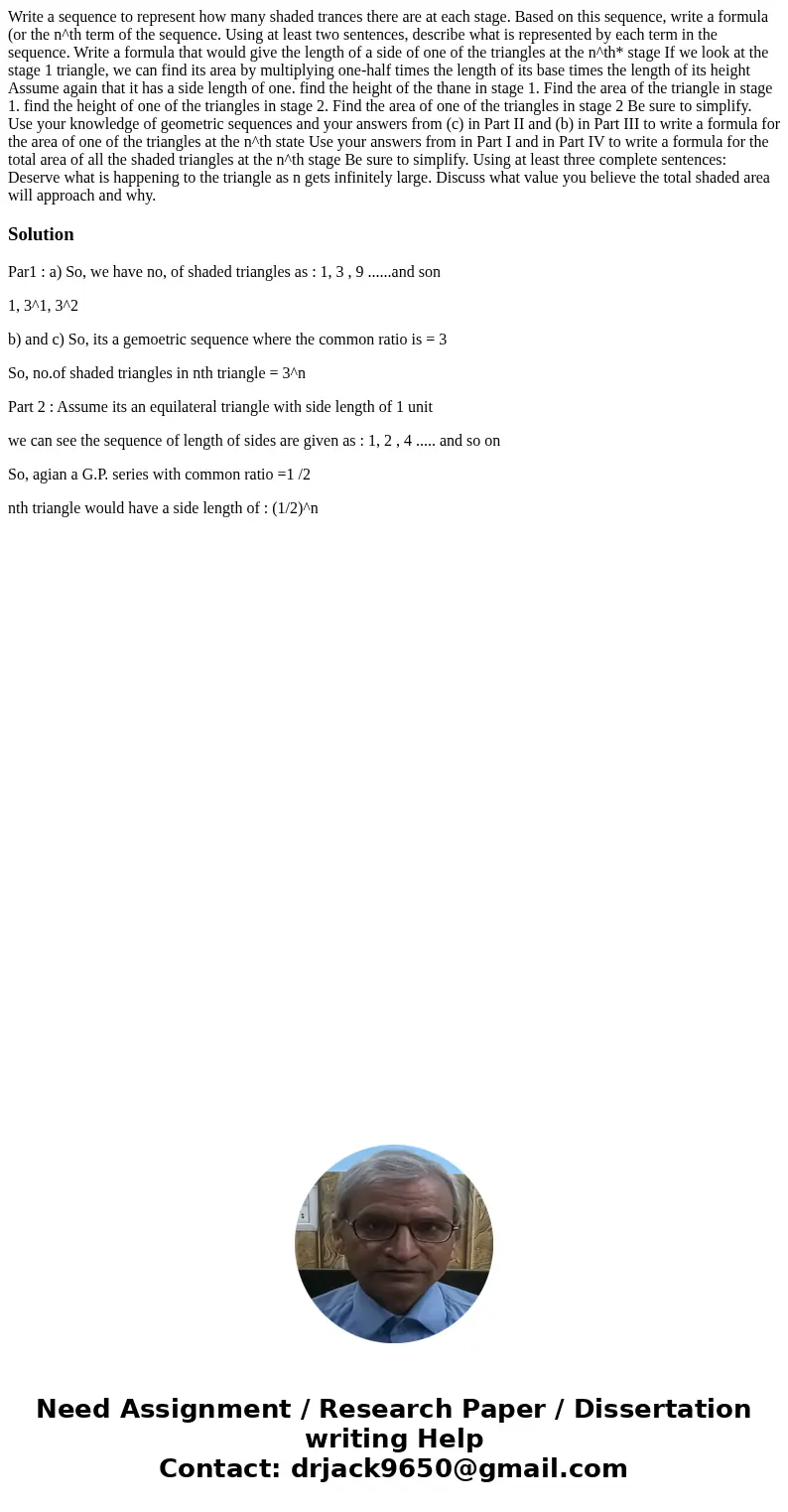Write a sequence to represent how many shaded trances there
Write a sequence to represent how many shaded trances there are at each stage. Based on this sequence, write a formula (or the n^th term of the sequence. Using at least two sentences, describe what is represented by each term in the sequence. Write a formula that would give the length of a side of one of the triangles at the n^th* stage If we look at the stage 1 triangle, we can find its area by multiplying one-half times the length of its base times the length of its height Assume again that it has a side length of one. find the height of the thane in stage 1. Find the area of the triangle in stage 1. find the height of one of the triangles in stage 2. Find the area of one of the triangles in stage 2 Be sure to simplify. Use your knowledge of geometric sequences and your answers from (c) in Part II and (b) in Part III to write a formula for the area of one of the triangles at the n^th state Use your answers from in Part I and in Part IV to write a formula for the total area of all the shaded triangles at the n^th stage Be sure to simplify. Using at least three complete sentences: Deserve what is happening to the triangle as n gets infinitely large. Discuss what value you believe the total shaded area will approach and why.
Solution
Par1 : a) So, we have no, of shaded triangles as : 1, 3 , 9 ......and son
1, 3^1, 3^2
b) and c) So, its a gemoetric sequence where the common ratio is = 3
So, no.of shaded triangles in nth triangle = 3^n
Part 2 : Assume its an equilateral triangle with side length of 1 unit
we can see the sequence of length of sides are given as : 1, 2 , 4 ..... and so on
So, agian a G.P. series with common ratio =1 /2
nth triangle would have a side length of : (1/2)^n

 Homework Sourse
Homework Sourse